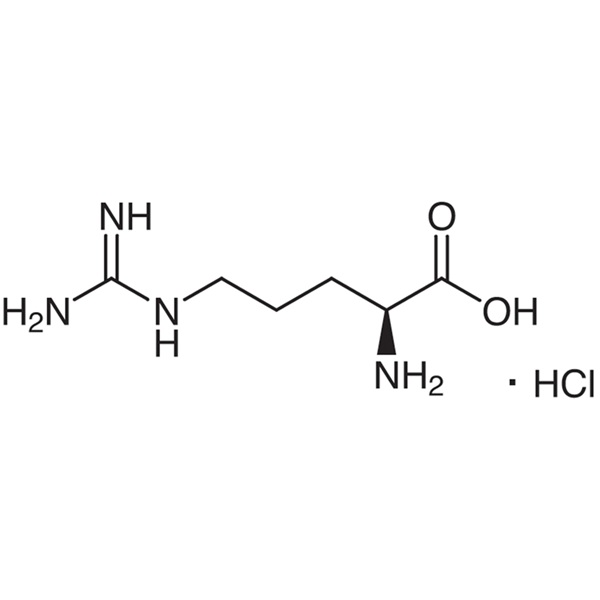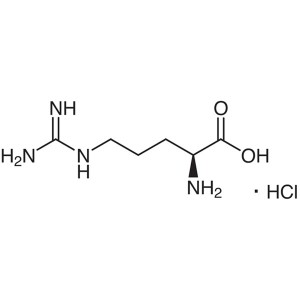L-Arginine Hydrochloride CAS 1119-34-2 (H-Arg-OH·HCl) Assay 99.0~101.0% Factory High Quality
Shanghai Ruifu Chemical Co., Ltd. is the leading manufacturer and supplier of L-Arginine Hydrochloride (H-Arg-OH·HCl) (CAS: 1119-34-2) with high quality, production capacity 1000 Tons per year. Ruifu Chemical supplys a series of amino acids derivatives. We can provide COA, worldwide delivery, small and bulk quantities available. If you are interested in L-Arginine Hydrochloride, Please contact: alvin@ruifuchem.com
| Chemical Name | L-Arginine Hydrochloride |
| Synonyms | H-Arg-OH·HCl; H-L-Arg-OH.HCl; L-(+)-Arginine Hydrochloride; L-Arginine HCl; L-Arginine Monohydrochloride; Arginine HCl; (S)-2-Amino-5-Guanidinopentanoic Acid Hydrochloride; (S)-(+)-Arginine Hydrochloride |
| Stock Status | In Stock, Production Capacity 1000 Tons per Year |
| CAS Number | 1119-34-2 |
| Molecular Formula | C6H14N4O2·HCl |
| Molecular Weight | 210.66 |
| Melting Point | 226.0~230.0℃(lit.) |
| Density | 1.42 |
| Water Solubility | Soluble in Water, Almost Transparency |
| Sensitive | Hygroscopic. Light Sensitive, Moisture Sensitive |
| Storage Temp. | Sealed in Dry, Store at Room Temperature |
| COA & MSDS | Available |
| Classification | Amino Acid Derivatives |
| Shelf Life | 24 Months From Manufacture Date if Stored Properly |
| Brand | Ruifu Chemical |
| Hazard Codes | Xi,Xn | RTECS | CF1995500 |
| Risk Statements | 37-36/38-36/37/38-20/21/22 | F | 3-10 |
| Safety Statements | 37/39-26-24/25-36 | TSCA | Yes |
| WGK Germany | 2 | HS Code | 2922499990 |
| Items | Inspection Standards | Results |
| Appearance | White Crystals or Crystalline Powder | Conforms |
| Identification | Infrared Absorption | Conforms |
| Specific Rotation [α]20/D | +22.1°~ +22.9° (C=8, 6N HCl) |
-33.8° |
| State of Solution | ≥98.0% (Transmittance) | 99.0% |
| Chloride (Cl) | 16.58~17.0% | 16.70% |
| Sulfate (SO4) | ≤0.020% | <0.020% |
| Ammonium (NH4) | ≤0.020% | <0.020% |
| Iron (Fe) | ≤10ppm | <10ppm |
| Heavy Metals (as Pb) | ≤10ppm | <10ppm |
| Arsenic (As2O3) | ≤1.0ppm | <1.0ppm |
| Other Amino Acids | Meets the Requirement | Conforms |
| Loss on Drying | ≤0.20% (105℃ for 3 Hours) | 0.16% |
| Residue on Ignition | ≤0.10% | 0.08% |
| Assay | 99.0~101.0% (Titration: Dry Basis) | 99.9% |
| pH Test | 4.7~6.2 (1.0g in 10ml Water) | 5.3 |
| Origin | Non-Animal Source | Conforms |
| Residual Solvents | Conforms | Conforms |
| Conclusion:This Product by Inspection Accords with the Standard of AJI-97 | ||
Package: Fluorinated Bottle, 25kg/bag, 25kg/Cardboard Drum, or according to customer's requirement.
Storage Condition: Store in sealed containers at cool, dry and ventilated warehouse away from incompatible substances. Protect from light and moisture.
L-Arginine Hydrochloride, when dried, contains not less than 98.5% of L-Arginine Hydrochloride (C6H14N4O2.HCl)
Description L-Arginine Hydrochloride occurs as white, crystals or crystalline powder. It is odorless, and has a slight, characteristic taste. It is freely soluble in water and in formic acid, and very slightly soluble in ethanol (95).
Identification
(1) Determine the infrared absorption spectrum of L-Arginine Hydrochloride, previously dried, as directed in the potassium bromide disk method under Infrared Spectrophotometry <2.25>, and compare the spectrum with the Reference Spectrum: both spectra exhibit similar intensities of absorption at the same wave numbers.
(2) A solution of L-Arginine Hydrochloride (1 in 50) responds to the Qualitative Tests <1.09> for chloride.
Optical rotation <2.49> [a]20D: +21.5~+23.59 (after drying, 2 g, 6 mol/L hydrochloric acid TS, 25 mL, 100 mm).
pH <2.54> Dissolve 1.0 g of L-Arginine Hydrochloride in 10mL of water: the pH of this solution is between 4.7 and 6.2
Purity (1) Clarity and color of solution-Dissolve 1.0 g of L-Arginine Hydrochloride in 10 mL of water: the solution is clear and colorless.
(2) Sulfate <1.14>-Perform the test with 0.6 g of L-Arginine Hydrochloride. Prepare the control solution with 0.35 mL of 0.005 mol/L sulfuric acid VS (not more than 0.028%).
(3) Ammonium <1.02>-Perform the test with 0.25 g of L-Arginine Hydrochloride, using the distillation under reduced pressure. Prepare the control solution with 5.0 mL of Standard Ammonium Solution (not more than 0.02%).
(4) Heavy Metals <1.07>-Proceed with 1.0g of L-Arginine Hydrochloride according to Method 1, and perform the test. Prepare the control solution with 2.0 mL of Standard Lead Solution (not more than 20 ppm).
(5) Arsenic <1.11>-Prepare the test solution with 1.0 g of L-Arginine Hydrochloride according to Method 1, and perform the test (not more than 2 ppm).
(6) Related substances-Dissolve 0.20 g of L-Arginine Hydrochloride in 10 mL of water, and use this solution as the sample solution. Pipet 1 mL of the sample solution, and add water to make exactly 10 mL. Pipet 1 mL of this solution, add water to make exactly 25 mL, and use this solution as the standard solution. Perform the test with these solutions as directed under Thin-layer Chromatography <2.03>. Spot 5mL each of the sample solution and standard solution on a plate of silica gel for thin-layer chromatography.Develop the plate with a mixture of ethanol (99.5), water, 1-butanol and ammonia water (28) (2:1:1:1) to a distance of about 10 cm, and dry the plate at 100℃ for 30 minutes. Spray evenly a solution of ninhydrin in acetone (1 in 50) on the plate, and heat at 80℃ for 5 minutes: the spots other than the principal spot from the sample solution are not more intense than the spot from the standard solution.
Loss on Drying <2.41> Not more than 0.20% (1 g, 105℃, 3 hours).
Residue on ignition <2.44> Not more than 0.1% (1 g).
Assay Weigh accurately about 0.1 g of L-Arginine Hydrochloride, previously dried, dissolve in 2 mL of formic acid, add exactly 15 mL of 0.1 mol/L perchloric acid VS, and heat on a water bath for 30 minutes. After cooling, add 45 mL of acetic acid (100), and titrate <2.50> the excess perchloric acid with 0.1 mol/L sodium acetate VS (potentiometric titration). Perform a blank determination.
Each mL of 0.1 mol/L perchloric acid VS=10.53 mg of C6H14N4O2.HCl
Containers and storage: Containers-Tight containers.
How to Purchase? Please contact Dr. Alvin Huang: sales@ruifuchem.com or alvin@ruifuchem.com
15 Years Experience? We have more than 15 years of experience in the manufacture and export of a wide range of high quality pharmaceutical intermediates or fine chemicals.
Main Markets? Sell to domestic market, North America, Europe, India, Korea, Japanese, Australia, etc.
Advantages? Superior quality, affordable price, professional services and technical support, fast delivery.
Quality Assurance? Strict quality control system. Professional equipment for analysis include NMR, LC-MS, GC, HPLC, ICP-MS, UV, IR, OR, K.F, ROI, LOD, MP, Clarity, Solubility, Microbial limit test, etc.
Samples? Most products provide free samples for quality evaluation, shipping cost should be paid by customers.
Factory Audit? Factory audit welcome. Please make an appointment in advance.
MOQ? No MOQ. Small order is acceptable.
Delivery Time? If within stock, three days delivery guaranteed.
Transportation? By Express (FedEx, DHL), by Air, by Sea.
Documents? After sales service: COA, MOA, ROS, MSDS, etc. can be provided.
Custom Synthesis? Can provide custom synthesis services to best fit your research needs.
Payment Terms? Proforma invoice will be sent first after confirmation of order, enclosed our bank information. Payment by T/T (Telex Transfer), PayPal, Western Union, etc.
L-Arginine Hydrochloride (H-Arg-OH·HCl) (CAS: 1119-34-2) is used in biochemical research, reduce blood amm onia, treat liver coma drug, can also be used in amino acid drugs, is an important component of amino acid infusion and comprehensive amino acid preparation, can be used as a nutrient supplement. L-Arginine Hydrochloride uses and applications include: Dietary supplement, nutrient in foods, pharmaceuticals intermediates. Amino Acid Drugs. L-Arginine Hydrochloride is used in the treatment of heart and circulatory diseases. It is a precursor of nitric oxide synthesis that induces vasodilation in vivo, there by relaxing blood vessels. It is also used in the treatment of angina and other cardiovascular problems. It is an important intermediate in the urea cycle and involved in the detoxification of nitrogenous wastes. It is commonly used in cell culture media and drug development.
1119-34-2 - Test
Transmittance of Solution
Take lg of this product, Add 10ml of water to dissolve, according to ultraviolet-visible spectrophotometry (General rule 0401 ), measure the transmittance at 430nm wavelength, not less than 98.0%.
Sulfate
Take 0.5g of this product and check it according to law (General rule 0802). Compared with the control solution made of 0.02% of standard potassium sulfate solution, it should not be more concentrated ().
Phosphate
Take 0.4g of this product, place it in the crucible, add 0.3g of magnesium nitrate and 5ml of water, put it in a water bath and evaporate to dryness, burn it with small fire until it is completely ash, add 5ml of water and 3ml of sulfuric acid solution (1- 4), slowly heat for 5 minutes, heat 10ml of water, filter, put the filtrate in a colorimetric tube, and wash the filter residue with an appropriate amount of hot water, add ammonium molybdate solution [take ammonium molybdate 0.5g, add sulfuric acid solution (3-100) 10ml to dissolve] and phosphorus test solution 1ml each, heat at 60°C for 10 minutes, such as blue, with standard phosphate solution (precision weigh 0.143g of potassium dihydrogen phosphate, put in 1000ml measuring flask, add appropriate amount of water to dissolve and dilute to the scale) 0.02% ml of control solution prepared by the same method should not be deeper ().
ammonium salt
Take 0.10g of this product and check it according to law (General rule 0808). Compared with the control solution made of 0.02% of standard ammonium chloride solution, it shall not be deeper ().
Protein
Take lg of this product, Add 10ml of water to dissolve, add 5 drops of 20% trichloroacetic acid solution, and no precipitation is allowed.
Other Amino Acids
Take an appropriate amount of this product, add water to dissolve and dilute to make a solution containing about 10 mg per lml as a test solution; Take 1ml for precision measurement and put it in a 500ml measuring flask, dilute to scale with water, shake, as a control solution; Take the appropriate amount of arginine and lysine hydrochloride in the same flask, water was added to dissolve and diluted to prepare a solution containing about 0.4mg each per 1ml as a system-suitable solution. According to the thin layer chromatography (General 0502) test, Draw 5 u1 of each of the above three solutions, respectively point on the same silica gel G thin layer plate, with N-propanol-concentrated ammonia solution (2:1) as the developing solvent, expand, dry, spray with ninhydrin in acetone solution (1- 50 ), and heat at 105°C until spots appear, and examine immediately. The control solution should show a clear spot, and the system applicable solution should show two completely separated spots. The test solution should not have more than one impurity spot, and the color should not be deeper (0.2%) than the main spot of the control solution.
Loss on Drying
Take this product, dry at 105°C for 3 hours, loss of weight shall not exceed 0.2% (General rule 0831).
Ignition Residue
Not more than 0.1% (General rule 0841).
Iron Salt
Take 2.0g of this product and check it according to law (General rule 0807). Compared with the control solution made of 0.001% of standard iron solution, it should not be deeper ().
Heavy Metals
Take 2.0g of this product, add 23ml of water and 2ml of acetate buffer (pH 3.5) to dissolve, and check according to law (General rule 0821 first law), containing heavy metals shall not exceed 10 parts per million.
Arsenic Salt
Take 2.0g of this product, add 23ml of water to dissolve, add hydrochloric acid 5mU to check according to law (General rule 0822 first law), should comply with the provisions (0.0001%).
Pyrogen
Take this product, add Sterile Water for Injection dissolved and diluted to make a solution containing 50mg per lml, check according to law (General rule 1142), dose according to rabbit body weight per lkg injection 10ml, should comply with the regulations. (For injection)
Chlorine Content
Take about 0.35g of this product, precision weighing, add 20ml of water to dissolve, add 2ml of dilute acetic acid and 8~10 drops of bromophenol blue indicator solution, and use silver nitrate titration solution (0.lmol/ L) titrated to blue-purple. Each 1 ml of silver nitrate titration solution (0.1 mol /L) corresponds to 3.545mg of C1. The chlorine content shall be 16.5%-17.1% based on the dry product.
1119-34-2 - Content Determination
Take this product about 0.1g, precision weighing, add anhydrous formic acid 3ml to dissolve, add glacial acetic acid 50ml and Mercury acetate test solution 6ml, according to the potential titration method (General rule 0701), with perchloric acid titration solution (0.1 mol /L) titration, and the results of the titration were corrected with a blank test. Each 1 ml perchloric acid titration solution (0.1 mol /L) corresponds to 10.53mg of C6H14N402. HCl.
-
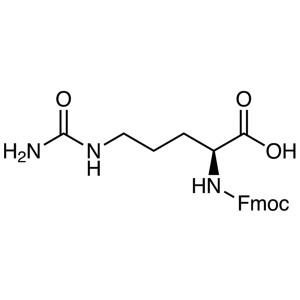
Fmoc-Cit-OH CAS 133174-15-9 Fmoc-L-Citrulline P...
-
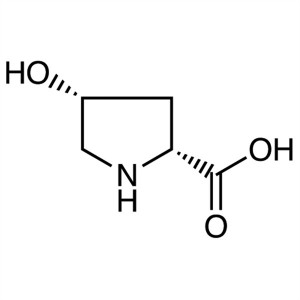
cis-4-Hydroxy-D-Proline CAS 2584-71-6 Purity >9...
-
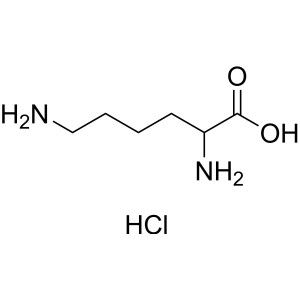
DL-Lysine Monohydrochloride CAS 70-53-1 Assay 9...
-
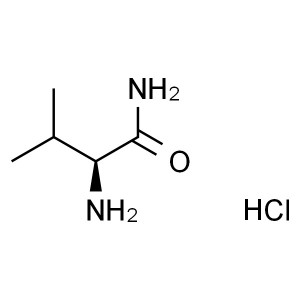
D-Valinamide Hydrochloride CAS 133170-58-8 Puri...
-
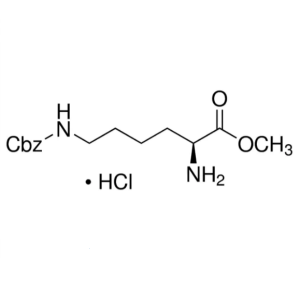
H-Lys(Z)-OMe·HCl CAS 27894-50-4 Purity >98.0% (...
-
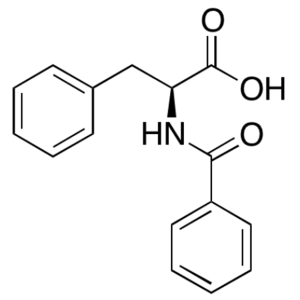
N-Benzoyl-L-Phenylalanine CAS 2566-22-5 (Bz-L-P...

